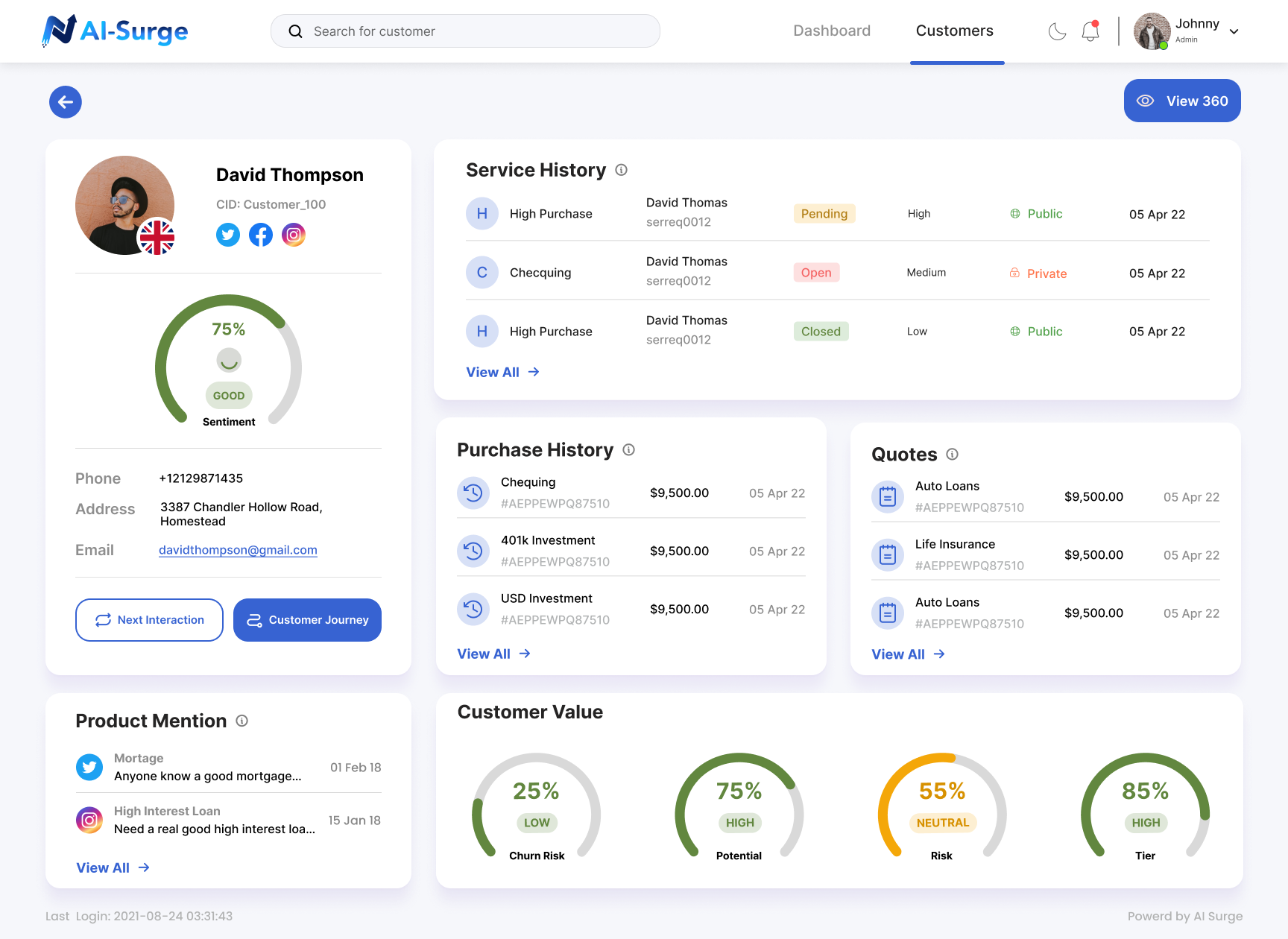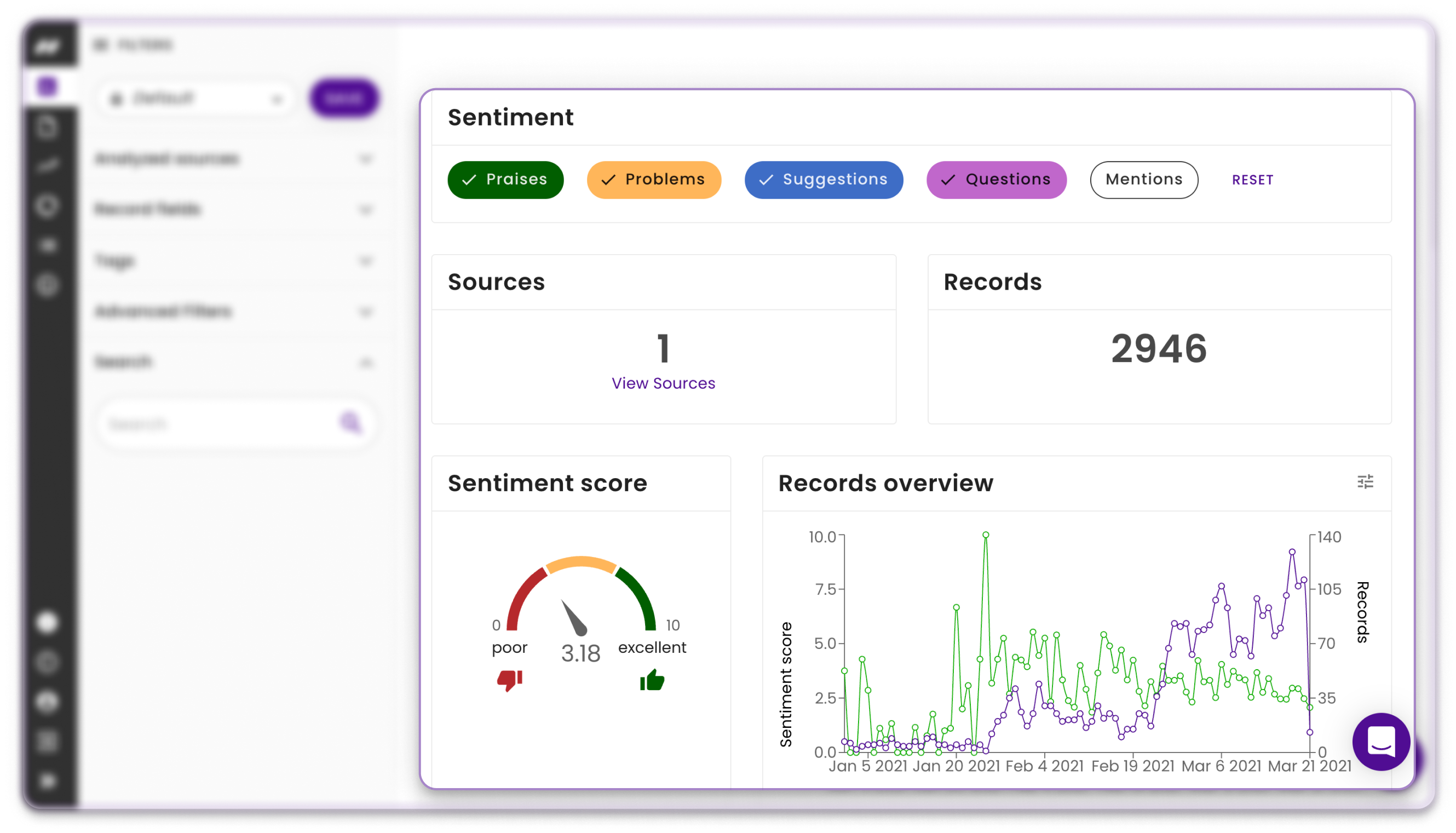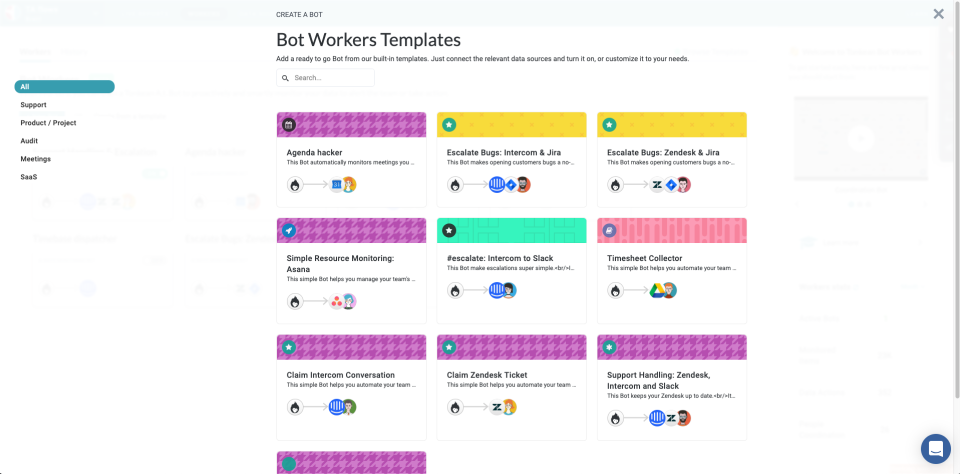Learn how AI can provide value to both your customer service team and customers.
Customer service leaders are feeling optimistic about artificial intelligence (AI), with over 65% planning to add AI-powered solutions to their tech stack by 2023[1]. But as you start exploring ways to supercharge your own customer service efforts with AI, you might have questions about the benefits of this emerging tech, as well as which solutions will help you achieve your goals.
By understanding what to look for in an AI-powered customer service tool, you can evaluate its effectiveness and build a business case for investment. To help you get there, we’ll discuss three Gartner research-backed benefits of AI solutions for customer service[1]. We’ll also provide examples of use cases so you can envision AI’s role in your own service strategy.
/ What is an AI-powered customer service tool?
AI-powered customer service refers to a number of different technology solutions that use machine learning and natural language processing to streamline customer service tasks.
Machine learning (ML) extracts insights from data to create data models. These models are then used to make decisions and solve problems. A machine learning model can recommend products to customers and agents by identifying common questions.
Natural language processing enables computers to understand human language by analyzing text and extracting meaning from it. The computer is then able to perform tasks such as translating languages and understanding customers’ questions.
While AI-powered customer service doesn’t refer to any one tool or software category, we’ll help you narrow your search by highlighting different types of tools that provide the benefits listed below, as well as specific features and capabilities to look for within those tools.
Our lists of artificial intelligence companies by location can help you find the services you’re looking for.
1. AI provides actionable insights through predictive analytics
One major benefit of AI-powered tools is their ability to obtain insights and predictions through predictive analytics. Predictive analytics uses data, statistics, algorithms, and machine learning to predict future outcomes based on historical data. You can use these predictions to guide your customer service strategy and ensure that customers receive the best experience possible.

Image of dashboard from predictive analytics platform AI Surge
Use cases for AI powered customer service tools that use predictive analytics include personalization, customer lifetime value (CLV) models, and customer routing.
Personalization allows businesses to tailor an experience or information to a specific customer or segment of customers based on information the company has learned about them. Examples of use cases include creating a customer journey, or offering personalized recommendations.
Customer lifetime value models show how buyers respond to offers and help define what revenue could or should be depending on customer satisfaction. CLV is often used with other metrics such as customer acquisition cost and customer churn. One way to use a CLV model is to offer loyalty benefits to high-profit customers to maintain those relationships.
Customer routing uses data and models to route or match customers with the best resource or customer service agent. Two examples of use cases are routing customers to agents with matching or similar personality profiles, and routing high-risk-of-churn customers to agents who score high on customer retention.
/ Feature spotlight
To get actionable insights from customer data, check out conversational artificial intelligence tools with reporting and analytics capabilities. They can help you create reports from each customer interaction, including human-computer interactions. Just make sure it lets you create documents or dashboards for easy-to-read interpretations of that data, like in the image above.
2. AI improves both customer and agent experience through natural language processing
Another benefit of AI is its ability to enhance customer and agent experiences using natural language processing. NLP makes it easier for agents to do their jobs by guiding their decisions while assisting customers or performing administrative tasks. NLP also makes it easier for customers to resolve issues on their own, providing a better customer experience.

Sentiment analysis dashboard in customer experience platform Keatext
Use cases for AI powered customer service tools that use natural language processing include conversational agents, such as chatbots and virtual assistants (VAs), and sentiment analysis.
Conversational agents interact with people via text or voice conversations. The two types we’ll highlight for our use cases are the AI chatbot and the virtual assistant.
The AI chatbot is useful for tasks that involve gathering and forwarding information, such as identifying a user’s intent before passing them on to a human agent, or answering FAQs. It can also assist customers who are having trouble logging into their account and schedule appointments, if linked to a calendar.
The more sophisticated virtual assistant helps businesses conduct personalized conversations with users and automate tasks or processes with/without human assistance, such as:
Communicating with customers in ways that feel more natural and less scripted
Observing customer purchasing behavior
Building and maintaining data models (e.g., trend cycles and retention)
Predicting and recommending production initiatives
Sentiment analysis aims to determine a customer’s attitude or overall emotional reaction. At its most basic, it looks for negative versus positive sentiment, but more advanced approaches evaluate based on multiple criteria (e.g., a review of a restaurant can be evaluated for its sentiment toward service, meals, prices, and atmosphere).
/ Feature spotlight
To make life easier for both your customers and agents, you should first explore our collection of natural language processing software. Features such as sentiment and text analysis, speech tagging and filtering, and multi-language processing will not only help you improve customer engagement, but also streamline business processes and enhance business insights.
Other AI-powered options to consider include:
Conversational AI software that offers both sentiment analysis and chatbot capabilities
Customer experience software with sentiment analysis capabilities
Chatbot software that provides automated responses to customer queries
Virtual assistant software that helps businesses leverage AI bots
3. AI optimizes workflow through task automation and augmentation
A third benefit of AI is both the automation and augmentation of business processes. While a common fear of AI is the replacement of automatable roles, an AI tool can actually enhance existing tasks to the benefit of customer support agents. AI’s ability to automate and augment processes reduces costs and improves efficiency by freeing resources for higher-value tasks.

Pre-built bot worker templates in RPA platform Tonkean
Use cases for AI powered customer service tools that optimize workflow include intelligent document processing (IDP), workforce management (WFM), post-call wrap-up, and robotic process automation (RPA).
Intelligent document processing involves extracting data from documents such as an invoice, warranty, or a scanned driver’s license. It uses text analytics and ML to help agents process invoices, orders, payments, and warranties. It can replace existing, labor-intensive manual entry systems, which saves money, reduces labor, and allows for faster service and data entry.
Workforce management applications help determine how to allot resources for your agents based on records that indicate needs and preferences. They can create schedules that best match anticipated demand for different skill sets at different times and can also offer rewards and recognition suggestions to managers based on data collected in that time period.
Post-call wrap-up solutions use speech-to-text capabilities to listen to and transcribe calls and assist agents in entering summaries and wrap-up codes. This results in faster record closing, lowered agent fatigue, better compliance, and increased accuracy.
Robotic process automation solutions automate processes that previously had to be identified and then modeled by a human. They do this through process mining, which analyzes workflows to identify opportunities for improvement. This results in improved processes and increased automation, as shown in the image above.
/ Feature spotlight
To automate and augment processes for your customer service team, we recommend the following AI-powered solutions:
Workforce management solutions offer AI-based workforce scheduling to address shift work challenges. Browse our database here.
Robotic process automation software’s goal is to reduce repetitive work and enhance productivity in your workplace using AI and machine learning, as we covered in our use cases above. Learn more here.
Workflow management solutions also use machine learning to drive automation. Filter your search by platforms that feature business process automation.
Building your business case for AI investment
Now that you know what to look for in an AI customer service tool, your business case for investment will be even stronger if the solution you’re eyeing offers the following two features:
CRM integration. AI solutions can be integrated with your customer relationship management software to automate tasks and speed up customer interactions. They do this by enabling search functionality that guides your agents to the information they need to resolve queries and increase customer satisfaction.
Code-free development. No-code software development allows non-technical employees to design and deploy software modules with minimal coding experience, which saves you time and money while still getting your team the tools they need.
Not ready to invest in software? You might be interested in AI-as-a-Service, or AIaaS. AIaaS allows you to experiment with AI technology to meet business goals without a large initial investment and with lower risk.
For customer service professionals, we recommend looking into AI implementation services companies, which will integrate AI solutions into your existing workflow. These companies also experiment with emerging techniques to provide unique implementation solutions that can help you gain a competitive advantage. Check out our full collection of AI companies here.
Note: The screenshots of applications selected in this article are examples to show a feature in context and are not intended as endorsements or recommendations.
